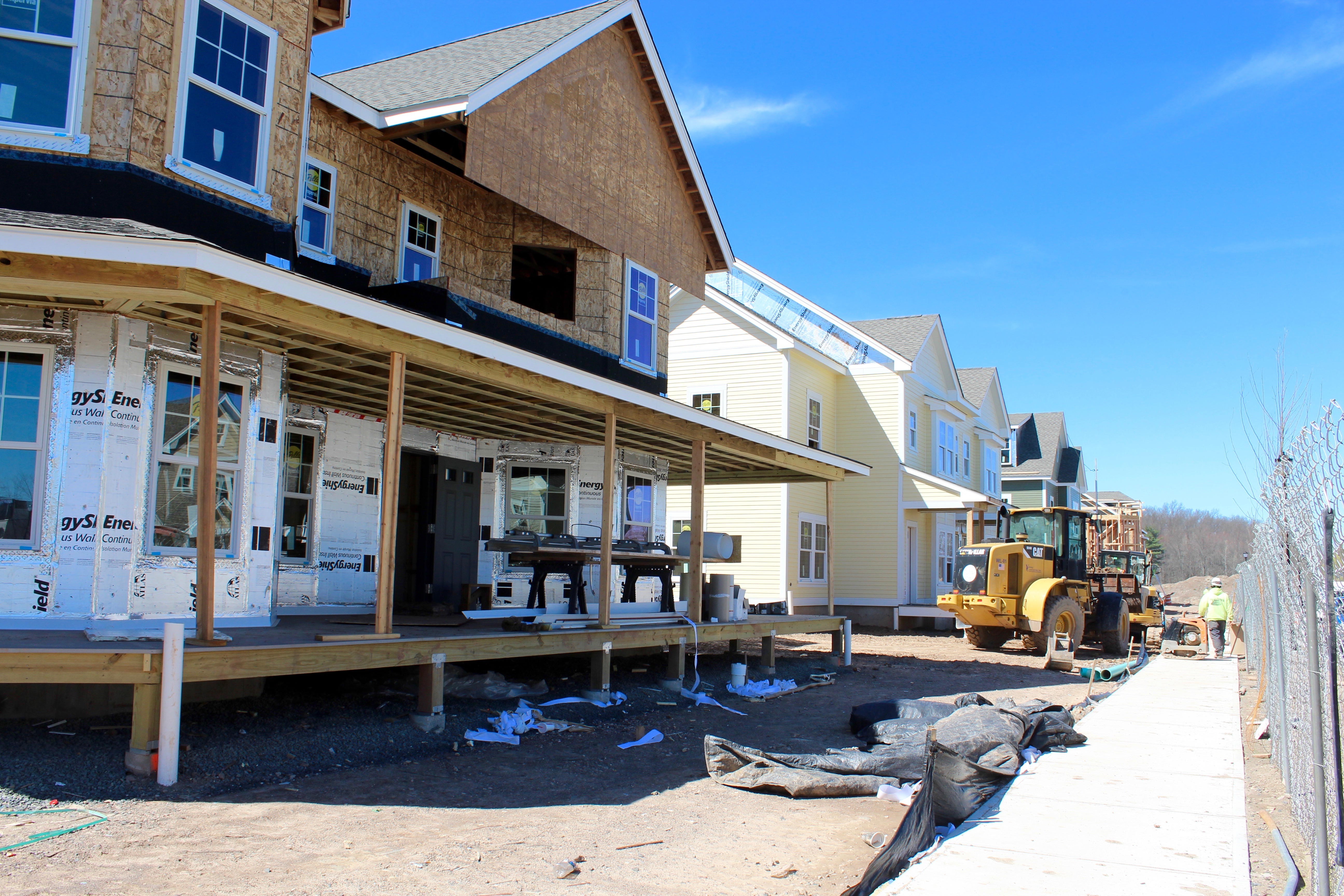
Jacqueline Rabe Thomas
Willow Creek Apartments under construction in the North End of Hartford in 2020.
Preliminary state data shows that fewer building permits for new housing were granted in 2021 than in every year since 2011, further contributing to Connecticut’s housing shortage.
As of November 2021, 3,335 units had been recorded. In comparison, the state recorded 4,452 by November 2020 and 4,662 by November 2019.
The data is compiled by the Department of Economic and Community Development and provides an overview of monthly permits each town issues, according to available census numbers. Raw data is available only up until November 2021 because official data isn’t released until May, but preliminary numbers suggest Connecticut fell behind on housing production last year.
“[The] new housing market sector is not performing as [well] as previous years,” said Kolie Sun, a researcher with the DECD. She’s been collecting this data for 20 years.
Sun said the pandemic is partly to blame. Some developers have paused production and demolition.
“You can’t look at production without looking at demolition data, too,” Sun said. “I’ve been doing this simulation for many years, and in 2020 [demolition] dropped.”
Demolition plays an important role in housing production because it targets aging buildings or those with safety concerns, according to Sun. Taking those buildings down opens up areas for new construction. Demolition data for 2021 isn’t available, but in 2020 there were 500 demolitions statewide and 828 in 2019. Before 2019, Sun said the state recorded more than 1,000 a year.
Other factors that are possibly behind the low housing production are supply chain issues and the labor shortage – similar problems affecting other industries across the country.
“It’s hard to get materials, and the cost of materials is skyrocketing,” said Greg Ugalde, a Connecticut-based builder and former chairman of the National Association of Home Builders. “And that’s forced some builders to the sidelines waiting for things like lumber to get under control. Prices have doubled or tripled in some areas, and you have to factor that into the price of a house.”
He said lumber is just one commodity whose cost is skyrocketing and affecting the housing market as a whole, including prices.
“For every $1,000 that you add to the price of a home, there are almost 154,000 households that are knocked out of the market. So when you increase prices you have to be on the lookout for families you’re losing,” Ugalde said, explaining why developers and builders may be holding out right now.
In the end, Ugalde predicts that Connecticut may continue to see low numbers of new housing units, but he said that shouldn’t come as a surprise. The state has been recording low production numbers since the 2008 housing market crash.
“When you look at the number that we have today, we are still struggling to get Connecticut back to where we need to be. We have never really recovered from the last recession,” Ugalde said.
This story was originally published Jan. 12, 2022, by Connecticut Public Radio.
"low" - Google News
January 16, 2022 at 08:07AM
https://ift.tt/3K8w0NE
Early data shows Connecticut housing production dropped to a decade low in 2021 - The Connecticut Mirror
"low" - Google News
https://ift.tt/2z1WHDx
Bagikan Berita Ini














0 Response to "Early data shows Connecticut housing production dropped to a decade low in 2021 - The Connecticut Mirror"
Post a Comment